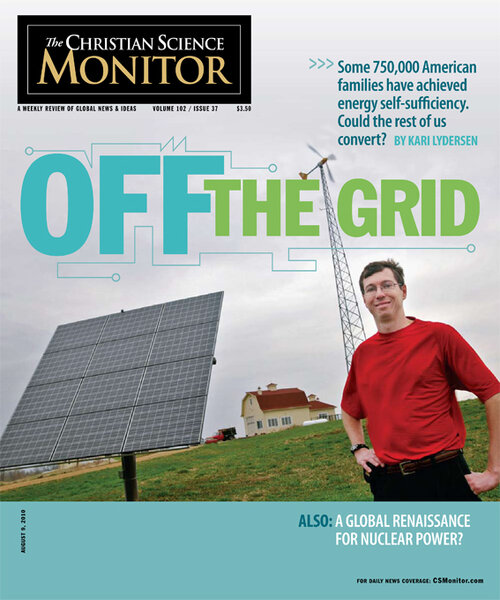Green living: tapping geothermal energy for a home HVAC system
Loading...
| Chicago
Even after several decades working with geothermal-energy pioneer James Bose at Oklahoma State University in Stillwater, Gerald McClain sounds like a kid in a candy shop as he describes his new home's geothermal heating and cooling system.
"It's exciting. It's like you're discovering something new," he says.
Thanks in part to Dr. Bose's influence, Oklahoma has become a national leader in geothermal heating and cooling (not to be confused with geothermal power generation).
Geothermal has been instituted in an increasing number of new houses, from Mr. McClain's $900,000 home among cedars in a gated community to Habitat for Humanity's 250-home Hope Crossing development in Oklahoma City.
As a retired Oklahoma State mechanical design engineering technology department head and part-time employee of the International Ground Source Heat Pump Association, McClain teaches online courses in geothermal system installation for people from China to Ramallah. Nevertheless, he solicited bids for his new home's system from conventional and geothermal HVAC contractors, determined to get the best deal. The lowest bid for a typical system using gas for heating and electricity for air conditioning was $30,000. The lowest bid to install a geothermal heating and cooling system was $45,000. With a 30 percent federal tax credit for clean energy, he couldn't afford not to go the geothermal route – "the difference was paid off almost immediately with the tax credit."
McClain's geothermal system is based on six one-inch-diameter pipes sunk 300 feet into the soft red clay below his home. A water-antifreeze mix in the pipes picks up the ground's constant 62 degree F. temperature, and three heat pumps in the attic use a small electric-powered compressor to heat or cool the home. The electricity for the pumps costs about $100 a month, much less than the typical heating and cooling bill in the area. McClain and his wife, Muna, an artist, plan to go completely off the grid by installing solar panels to power the heat pumps and lighting.
Though developers are often reluctant to recommend or install geothermal systems, McClain says, it is an affordable choice for new homes of any price. "People in the know are doing it," he says. "It's this secret more people should find out about."





